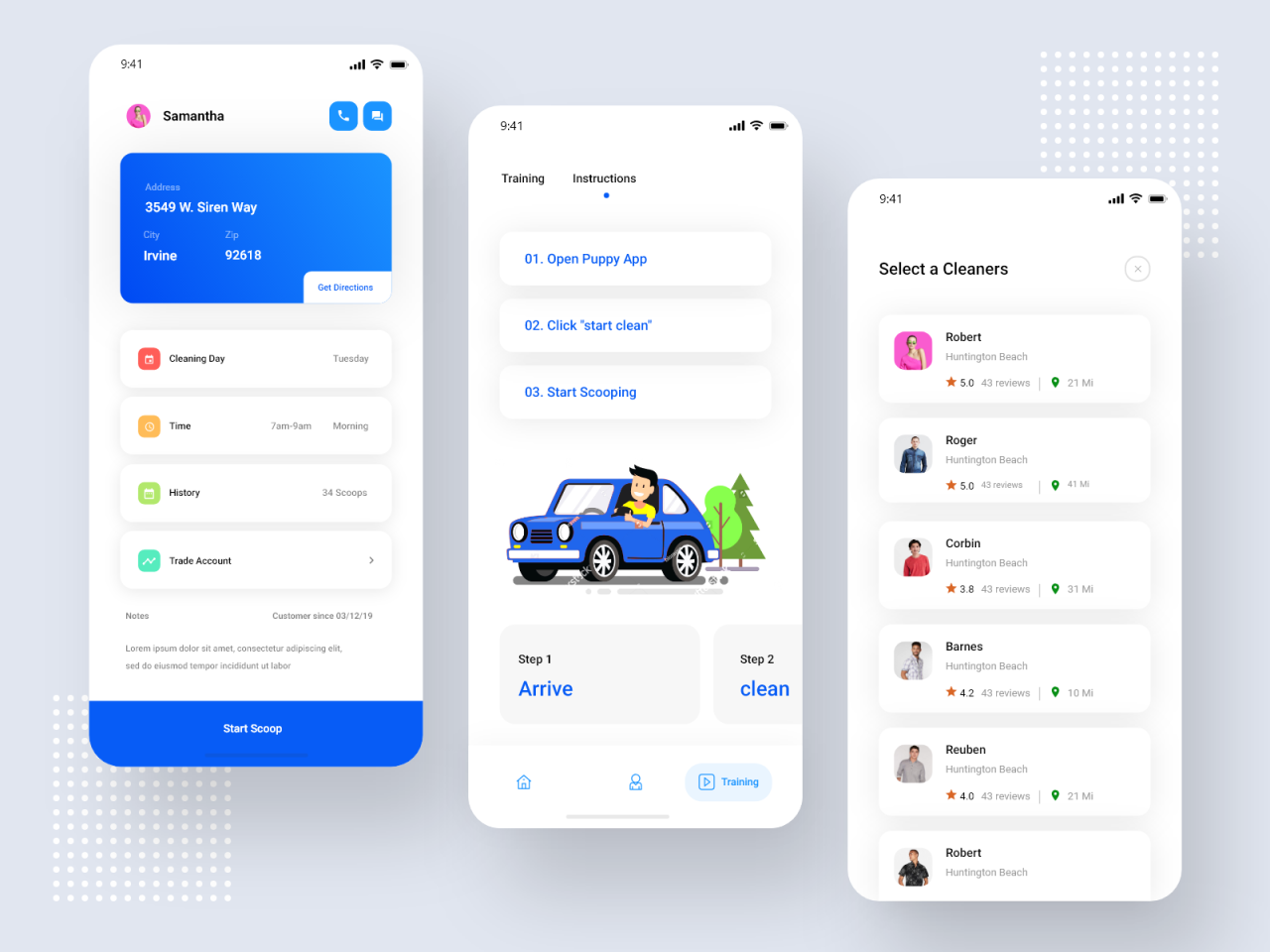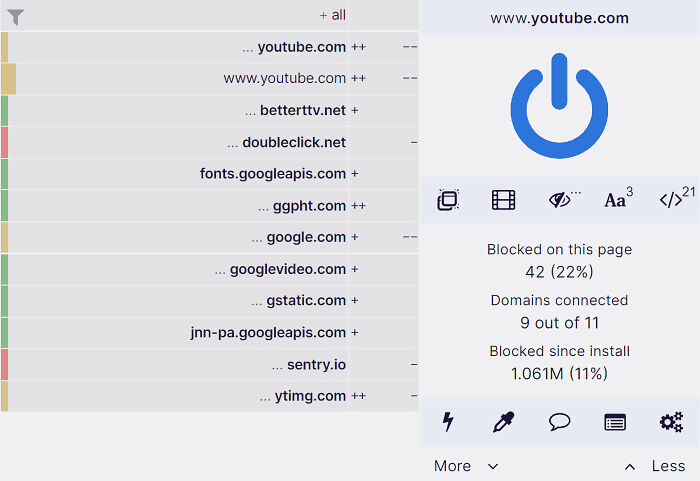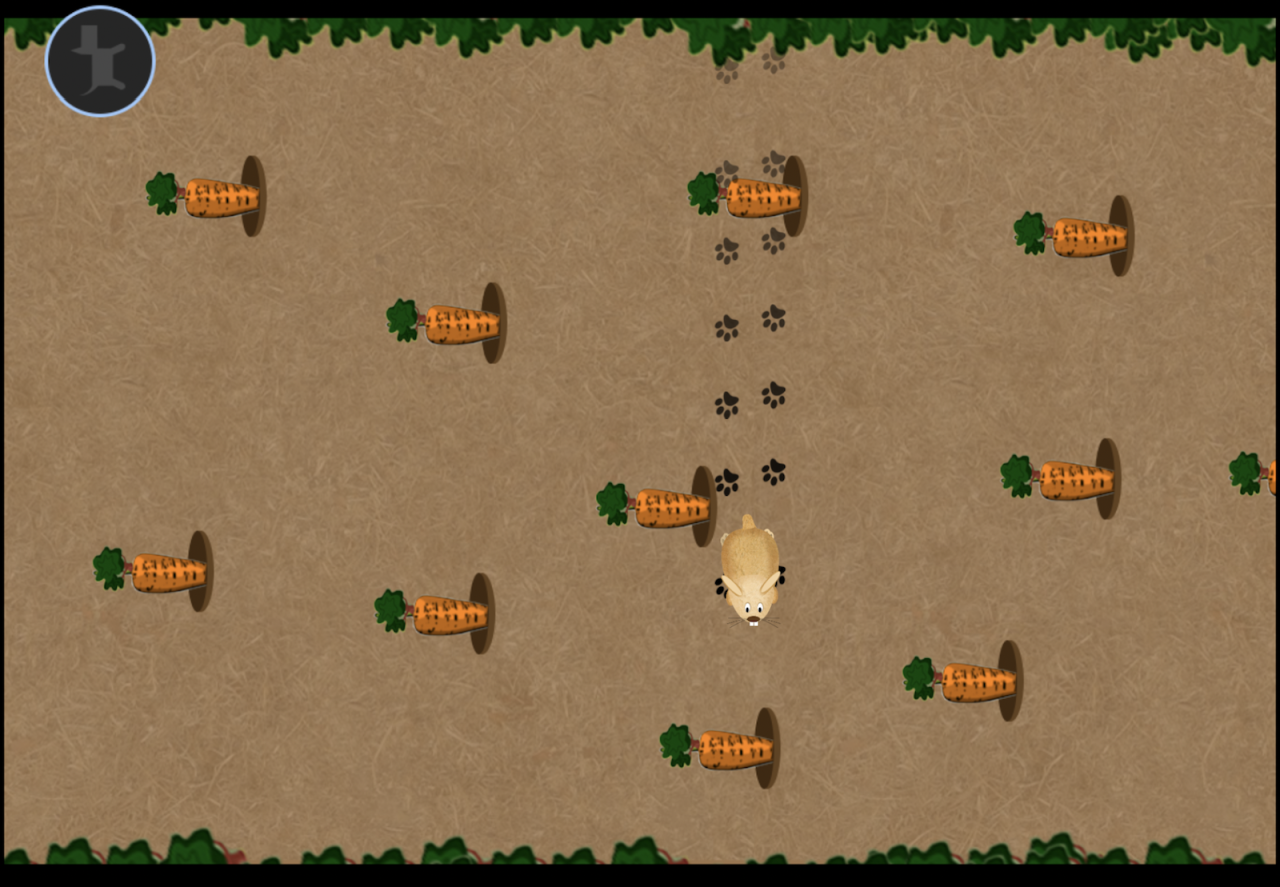
Free Software Is Like a Free Puppy Always
Free software is like a free puppy always: that initial rush of excitement, the feeling of something new and wonderful… but then reality hits. Getting free software might seem like a steal, just like adopting a cute, fluffy puppy. But both come with unexpected responsibilities, hidden costs, and a whole lot of learning. This post explores the surprising parallels between the world of open-source software and the joys (and challenges!) of puppy ownership.
We’ll delve into the initial appeal and the long-term commitment involved in both scenarios, comparing the unexpected challenges and how to overcome them. We’ll also examine the long-term benefits, the true meaning of “free,” and the importance of community support in navigating this exciting (and sometimes overwhelming) journey. Get ready for a heartwarming and insightful comparison that will make you think twice before clicking “download” or saying “yes” to those puppy-dog eyes!
Initial Appeal and Long-Term Commitment

The allure of something free is undeniably strong. Whether it’s a piece of software promising to streamline your workflow or an adorable puppy looking for a home, the initial appeal is often overwhelming. Both scenarios, however, mask a significant truth: free often comes with hidden costs and a substantial long-term commitment. This commitment extends beyond the initial acquisition and requires careful consideration before you take the plunge.The excitement of installing that new, free software is similar to bringing home a fluffy, playful puppy.
With the software, you envision a world of increased productivity and efficiency, just as with the puppy, you dream of endless walks in the park and snuggles on the couch. Downloading that program feels effortless, much like the initial adoption process. The reality, however, is far more complex.
Hidden Costs and Responsibilities
Both free software and free puppies come with unexpected expenses and responsibilities. While the initial acquisition is free, ongoing maintenance and support can be surprisingly costly and time-consuming. Let’s examine these hidden costs in detail.
| Cost Category | Free Software | Free Puppy |
|---|---|---|
| Initial Acquisition | Free download | Free adoption/rescue |
| Maintenance | Updates, bug fixes, security patches (time investment, potential paid support) | Food, water, toys, grooming supplies |
| Unexpected Expenses | Data loss due to incompatibility, security vulnerabilities requiring professional help, re-installation costs | Veterinary bills (vaccinations, illnesses, accidents), emergency care |
| Long-Term Commitment | Learning curve, ongoing learning of new versions, potential need for future migration to different software | Training, socialization, ongoing care for 10+ years |
Responsibility and Ongoing Support
The responsibility involved in maintaining and supporting both free software and a puppy is significant. With free software, this involves staying updated with security patches, learning to troubleshoot problems, and potentially seeking help from online communities or paid support services. For example, failing to update a piece of open-source accounting software could leave your business vulnerable to security breaches, resulting in significant financial losses.
Similarly, neglecting to back up your data could lead to irreparable data loss.For a puppy, the responsibility is even more profound. This involves providing regular food, water, shelter, and veterinary care. Training is crucial for socialization and preventing behavioral problems. A lack of proper training can lead to destructive behaviors or even endanger the animal and others.
Free software is like a free puppy – adorable at first, but needing constant attention. Similarly, managing cloud security requires ongoing vigilance, and understanding solutions like bitglass and the rise of cloud security posture management is key. Just like that puppy needs training, your cloud needs robust security measures to prevent future headaches. So, while free is tempting, true cost often emerges later, mirroring the unexpected expenses of pet ownership.
Consider the example of a dog that isn’t properly house-trained – this requires significant time, patience, and potential professional help to resolve. The commitment extends well beyond the initial excitement, requiring consistent effort and dedication for many years.
Unexpected Challenges and Problem-Solving: Free Software Is Like A Free Puppy Always
Getting free software, much like welcoming a free puppy, often comes with the rosy picture of unconditional joy. But reality, as always, can be a bit more… messy. While the initial excitement is undeniable, unexpected challenges can quickly pop up, testing your patience and problem-solving skills. Just as a puppy might unexpectedly chew your favorite shoes, free software can unexpectedly crash or refuse to cooperate with your existing system.Free software, while often amazing, isn’t always without its quirks.
Bugs, those pesky little glitches in the code, can manifest in various ways, from minor annoyances to complete system freezes. Think of it like a puppy’s occasional misbehavior – a sudden nip, an unexpected jump on the sofa. Compatibility issues can also arise; your shiny new free software might not play nicely with your existing programs, much like a puppy might not get along immediately with your resident cat.
And finally, unlike commercial software with dedicated support teams, free software often relies on community support, which, while incredibly valuable, can sometimes feel less immediate than a call to a vet.
Troubleshooting Free Software and Addressing Puppy Behavioral Issues
Addressing problems in both free software and puppy behavior requires a systematic approach, combining proactive measures with reactive problem-solving. Both situations benefit from a similar combination of training, preventative measures, and seeking help when needed.
- Identifying the Problem: Just as you’d need to observe a puppy’s behavior to understand why it’s misbehaving (e.g., is it bored, hungry, or scared?), diagnosing a software issue requires careful observation. Check error messages, system logs, and test different scenarios to isolate the problem.
- Seeking Information: For both the puppy and the software, research is key. Consult online forums, documentation, or manuals for troubleshooting tips. This is similar to researching puppy training methods or consulting a dog behaviorist.
- Testing Solutions: Try simple fixes first (e.g., restarting the software, updating drivers) before resorting to more drastic measures. Similarly, you might try ignoring a puppy’s unwanted behavior initially, before resorting to more formal training methods.
- Seeking External Help: If simple fixes fail, seek help from the software’s community forums or online support groups. This is comparable to seeking advice from experienced dog owners or professional trainers.
Community Support for Free Software and Puppy Support Networks
The beauty of open-source software lies in its community. Forums, mailing lists, and dedicated websites are often brimming with helpful users ready to assist. Think of it as a network of fellow dog owners, sharing tips and experiences. However, unlike a personal trainer who might give you immediate feedback, navigating community support requires patience and clear communication.
You need to be able to articulate your problem effectively, much like describing your puppy’s behavior clearly to a trainer. You’ll find that the community can provide diverse solutions and perspectives, similar to how multiple dog owners can offer various approaches to puppy training. But, just like not all dog training advice is good advice, you must critically evaluate the information received from community members.
The Value Proposition

So, you’ve adopted free software – congratulations! Just like bringing home a new puppy, the initial excitement is palpable. But the real rewards, the lasting benefits, unfold over time. This isn’t just about saving money upfront; it’s about cultivating a relationship that grows stronger and more rewarding with each passing year. Let’s explore how the long-term benefits of free software mirror the deep and enduring bonds we form with our canine companions.The long-term advantages of free software and raising a puppy share a surprising number of parallels.
Both require an initial investment of time and energy, but the payoff in terms of cost savings, flexibility, and emotional reward is significant. The initial learning curve can feel steep, but just like house-training a puppy, persistence and patience lead to incredible results.
Cost Savings and Long-Term Financial Stability
Free software, by its very nature, eliminates the recurring costs associated with proprietary software licenses. This is a significant advantage, especially for individuals or small businesses with limited budgets. Think of it like this: the initial cost of a puppy includes food, vet bills, and toys. But the cost of a commercial software license can continue for years, whereas the cost of maintaining free software is primarily your time and effort.
Free software is like a free puppy; it might seem appealing initially, but hidden costs can arise. For example, consider the implications of facebook asking bank account info and card transactions of users – a seemingly “free” service with potentially expensive consequences. Ultimately, just like that adorable puppy, free software often requires ongoing commitment and careful consideration to avoid unforeseen expenses or vulnerabilities.
Over time, the cumulative savings from avoiding software license fees can be substantial, freeing up resources for other important investments. For example, a small business might use the money saved on software to invest in marketing or employee training, leading to stronger business growth.
Flexibility and Adaptability: Shaping Your Software, Training Your Pup
Free software often offers greater flexibility and customization options than its proprietary counterparts. You can tailor it to your specific needs, integrate it with other tools, and even contribute to its development. This is akin to training your puppy: with patience and consistency, you shape their behavior and abilities to fit your lifestyle. A well-trained dog is a joy; similarly, customized free software enhances productivity and efficiency.
For instance, imagine needing a specific feature in a word processor. With free software, you might find a plugin or even contribute to the development of the feature yourself, whereas proprietary software might leave you stuck with limitations.
Community Involvement and Mutual Support
The vibrant communities surrounding many free software projects offer invaluable support and resources. This collaborative spirit mirrors the companionship and unconditional love you receive from a dog. Just as dog owners share tips and support each other, the free software community offers help, advice, and a sense of belonging. This support network can be crucial when encountering unexpected challenges.
Imagine struggling with a complex issue in your chosen software. The community can provide invaluable assistance, troubleshooting the problem and helping you find a solution, much like fellow dog owners might help you navigate a tricky training situation.
The “Free” Factor
The allure of “free” is powerful, whether it’s a piece of software or a fluffy puppy. Both offer immediate gratification, a sense of acquisition without immediate financial outlay. However, the reality of “free” in both cases is far more nuanced than a simple absence of a price tag. Understanding these nuances is crucial before embracing either a free software project or a free pet.The concept of “free” in free software, as defined by the Free Software Foundation, refers to freedom, not price.
It means freedom to run the program, study how it works, adapt it to your needs, and redistribute copies. This is fundamentally different from a “free” puppy, where “free” often simply means someone is giving the animal away, potentially due to unforeseen circumstances or inability to care for it properly. While you don’t pay money upfront for either, the long-term costs and responsibilities are significantly different.
Free software is like a free puppy; it’s adorable at first, but needs constant care and attention. The initial charm can quickly fade if you don’t understand the underlying mechanics, which is why I’ve been diving into the world of application development, particularly learning about domino app dev, the low-code and pro-code future , to better understand how to build and maintain robust software.
Just like a puppy, a poorly-managed software project can become a real headache, so planning is key!
Financial and Time Costs of “Free” Software and Pets
The initial cost of acquiring both free software and a free puppy might be zero, but ongoing costs quickly accumulate. For free software, this might involve the time investment needed to learn the software, troubleshoot problems, or even contribute to its development if you want to customize it heavily. There can also be hidden costs associated with compatibility issues, the need for specialized hardware or support, or the potential loss of productivity if the software proves unreliable.
With a free puppy, the expenses are far more tangible: food, veterinary care (including vaccinations, spaying/neutering, and potential emergencies), grooming, toys, training classes, and potentially even pet insurance. The time commitment is equally substantial, requiring daily walks, playtime, training, and regular attention to ensure the puppy’s physical and emotional well-being. These costs, both financial and temporal, can easily surpass the cost of purchasing paid software or a pet from a breeder.
Potential Downsides of Accepting “Free” Offerings
Getting something for “free” often comes with unseen risks. Free software, while often robust and reliable, might lack the polish, support, and documentation of commercial alternatives. Security vulnerabilities might be slower to address, and updates might be infrequent or nonexistent. A free puppy, similarly, may come with hidden health problems or behavioral issues stemming from neglect or poor breeding practices.
The initial joy of acquiring something without cost can quickly turn to frustration and expense if problems arise that require significant time, money, or effort to resolve. Consider the potential for unexpected veterinary bills, behavioral training costs, or the emotional toll of dealing with a sick or unruly animal. Free software could similarly lead to lost productivity due to bugs, incompatibility, or the need to find alternative solutions.
Factors to Consider Before Adopting Free Software or a Puppy
Before you embrace the “free” option, careful consideration of the responsibilities involved is essential. A thoughtful approach will help avoid potential disappointments and unnecessary burdens.
- Software: Assess your technical skills, research the software’s community support, examine its documentation and user reviews, and understand the licensing terms (even for free software, licensing dictates how you can use and share it). Consider the potential time investment for learning and troubleshooting.
- Puppy: Evaluate your lifestyle, financial resources, and living situation to determine if you can provide adequate care. Consider the long-term commitment (a dog’s lifespan is typically 10-15 years), the potential for vet bills, training expenses, and the emotional responsibility of caring for a living creature.
- Both: Investigate the potential for hidden costs or unforeseen challenges. Be realistic about your capabilities and resources. Don’t be afraid to say no if you aren’t adequately prepared.
Community and Support Networks
Adopting free software, much like welcoming a puppy into your home, requires commitment beyond the initial excitement. While the initial appeal is undeniable – free software offers cost-effective solutions, and puppies are undeniably adorable – the long-term success of both hinges heavily on the support networks available. These networks provide crucial assistance in navigating challenges, ensuring longevity, and maximizing the value proposition.The role of community in fostering the success of free software and well-adjusted puppies is remarkably similar.
Just as a breed-specific dog club offers guidance on training, health, and socialization, the free software community provides expertise, collaboration, and troubleshooting assistance. These communities act as hubs for knowledge sharing, problem-solving, and fostering a sense of collective ownership. For free software, this translates to bug fixes, feature enhancements, and ongoing development; for puppies, it means expert advice on nutrition, behavioral issues, and training techniques.
Community Contributions to Success
The success stories of both free software projects and well-adjusted puppies often stem from active community involvement. Consider the Linux kernel: its ongoing development and stability are a direct result of thousands of developers worldwide contributing their time and expertise. Similarly, a puppy raised with consistent training, socialization through puppy classes, and interaction with other dogs within a structured environment, often facilitated by breed-specific clubs, is more likely to become a well-behaved and confident companion.
In both cases, the collaborative effort leads to a superior outcome.
Examples of Successful Community Initiatives, Free software is like a free puppy always
The Debian Project, a prominent free software distribution, exemplifies successful community-driven development. Its community-based approach ensures a diverse range of packages and ongoing support, driven by the contributions of numerous volunteers. In the puppy world, organizations like the American Kennel Club (AKC) and various breed-specific rescue organizations play a vital role. The AKC provides resources and standards for breeders, while rescue organizations offer support to adopters, promoting responsible pet ownership and providing crucial assistance to both dogs and their human companions.
These initiatives showcase the power of collective effort in achieving positive outcomes.
Wrap-Up

So, is free software really like a free puppy always? Absolutely! The initial thrill is undeniable, but it’s the ongoing commitment, the unexpected hurdles, and the unwavering support that truly define the experience. Just like raising a puppy, embracing free software requires dedication, patience, and a willingness to learn. But the rewards—the sense of accomplishment, the flexibility, the strong community—are well worth the effort.
Ultimately, whether it’s a furry friend or a powerful piece of software, the “free” aspect is often just the beginning of a beautiful, albeit sometimes challenging, journey.
FAQs
What are some common hidden costs associated with free software?
Hidden costs can include the time investment for learning the software, troubleshooting issues, searching for community support, and potential costs for hiring professionals if you encounter serious problems you can’t solve yourself.
Is all free software equally reliable?
No. The reliability of free software varies greatly depending on the project, its community support, and the amount of development and testing it has received. Some projects are incredibly robust, while others may be less stable.
Where can I find reliable community support for free software?
Many free software projects have dedicated forums, mailing lists, and online communities where users can ask questions, share solutions, and get help from experienced developers and other users.
How do I know if I’m ready for free software?
Consider your technical skills, your willingness to troubleshoot problems, and the level of support you’re comfortable with. If you’re a beginner, you might want to start with well-documented and widely used free software with active communities.
